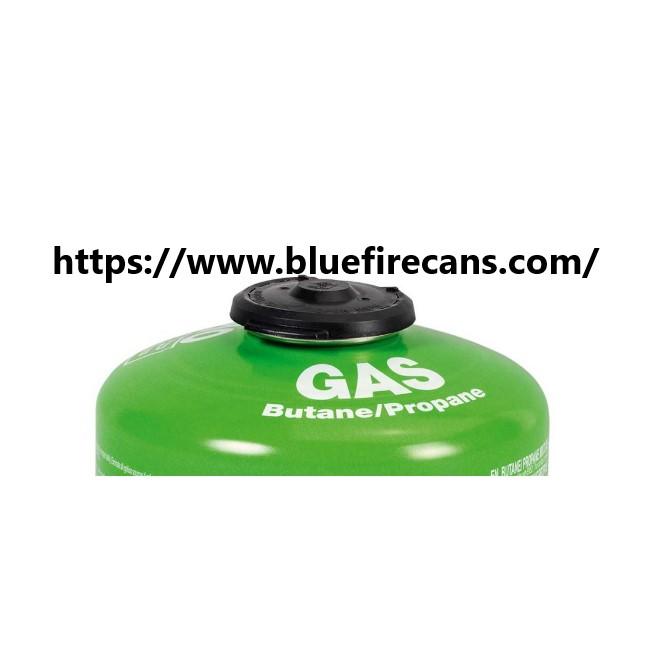Bluefirecans Practical Guide: Estimating Usable Fuel And Safety For Outdoor Adventures

Portable fuel labels look helpful, but the number stamped on the side rarely tells the whole story about how long a single canister will actually serve when you are cooking, heating, or steadying a flame in the field. For example, a 230g Gas Cartridge sits squarely between the flyer-friendly specification and the realities of everyday use: it states how much mass was placed into the vessel, yet that figure only becomes meaningful when you consider the vaporization behavior, the appliance demand, and the environmental conditions that influence usable output.
Inside a sealed container some of the mixture exists as liquid while an amount of vapor occupies the headspace. When an appliance draws gas it consumes vapor and more liquid must evaporate to replace that vapor if flow is to continue. The speed at which liquid becomes vapor depends on formulation and temperature. Cold air lowers vapor pressure and slows evaporation, which can cause powerful burners to falter or sputter; warm conditions raise pressure and can change how controllable a flame feels. These physical dynamics explain why two identical-looking canisters may behave very differently on the same trip.
Device characteristics are equally important. Backpacking stoves engineered for simmering ask for steady, modest flow and do well with canister mixes that maintain pressure at moderate temperatures. High-output grills, large camp stoves, and patio heaters demand rapid vaporization; when a canister cannot supply vapor fast enough the appliance will struggle, leading to long boil times, uneven heat, and frustrated cooks. Understanding a stove or heater's typical flow requirements makes pairing it with the right supply far easier and reduces the chance of surprises.
Real-world testing converts abstract numbers into useful planning metrics. Before a trip, boil a liter of water at home and time it with a fresh canister; repeat at cooler temperatures if you can. Observe how long a deliberate simmer runs and whether flame control feels linear across settings. Convert those observations into practical expectations — meals per can, minutes of boil, or number of coffee boils — and plan with a comfortable buffer. A small lightweight spare carried for critical segments is often the cheapest and least stressful insurance you can bring.
Safety and storage practices influence both performance and risk. Keep canisters upright in a cool, ventilated place away from direct heat, sunlight, and open flame. Inspect containers for dents, corrosion, or compromised seals before attaching them to an appliance. Never attempt to refill disposable canisters or fashion improvised adapters that bypass manufacturer instructions; altering a pressure vessel or mixing fuels can create hazardous pressure dynamics and contamination. If a canister shows signs of deformation, hissing, or unusual warmth, retire it and dispose of it according to local regulations.
Economics are clearer when evaluated by effective output rather than sticker weight. Two cans labeled with similar grams can have distinct value in practice depending on how they vaporize under your typical conditions. Track consumption across a few outings and use that data to choose the product that minimizes cost per useful minute or cost per meal. Sometimes a slightly heavier-labeled product will cost less per use, and sometimes a different blend will prove more economical because it performs reliably in the temperature ranges you encounter most.
Group planning benefits from communal awareness and simple protocols. For families or groups, decide in advance how many meals to expect per can and assign someone to monitor usage. Share a short checklist for safe attachment and detachment practices, and ensure everyone knows basic troubleshooting steps for weak flames or unexpected pressure loss. These small routines keep meals on schedule and reduce last-minute stress for leaders and participants alike.
Retailers and manufacturers who translate lab specs into consumer-relevant guidance create happier customers. Product pages that include estimated boil times at common temperatures, suggested appliance pairings, troubleshooting tips, demonstration videos, and downloadable quick-start guides help buyers make informed choices. Brands that invest in clarity and real-world testing build trust, reduce returns, and encourage customers to come back for the next trip.
For everyday users, the takeaway is simple: move beyond labels to understand behavior. Test equipment at home, pack a modest safety buffer, and match fuel type to device demand and expected conditions. Doing so improves reliability, reduces waste, and enhances safety. Thoughtful sellers and clear product descriptions make the choice even easier.
If you want options that emphasize predictable performance, look for sellers who publish real-world metrics and pairing advice; you can explore practical selections and guided recommendations at https://www.bluefirecans.com/product/ which often include user reviews and temperature guidance to help pick the right item for your needs. Small habits like tracking burn time on a smartphone note, labeling partially used canisters with date and remaining estimate, and practicing attachment at home go a long way. These micro-routines prevent surprises, build user confidence, and keep outdoor plans flowing smoothly without last-minute complications or dangerous improvisation, and safety.
- Art
- Causes
- Crafts
- Dance
- Drinks
- Film
- Fitness
- Food
- Παιχνίδια
- Gardening
- Health
- Κεντρική Σελίδα
- Literature
- Music
- Networking
- άλλο
- Party
- Religion
- Shopping
- Sports
- Theater
- Wellness



